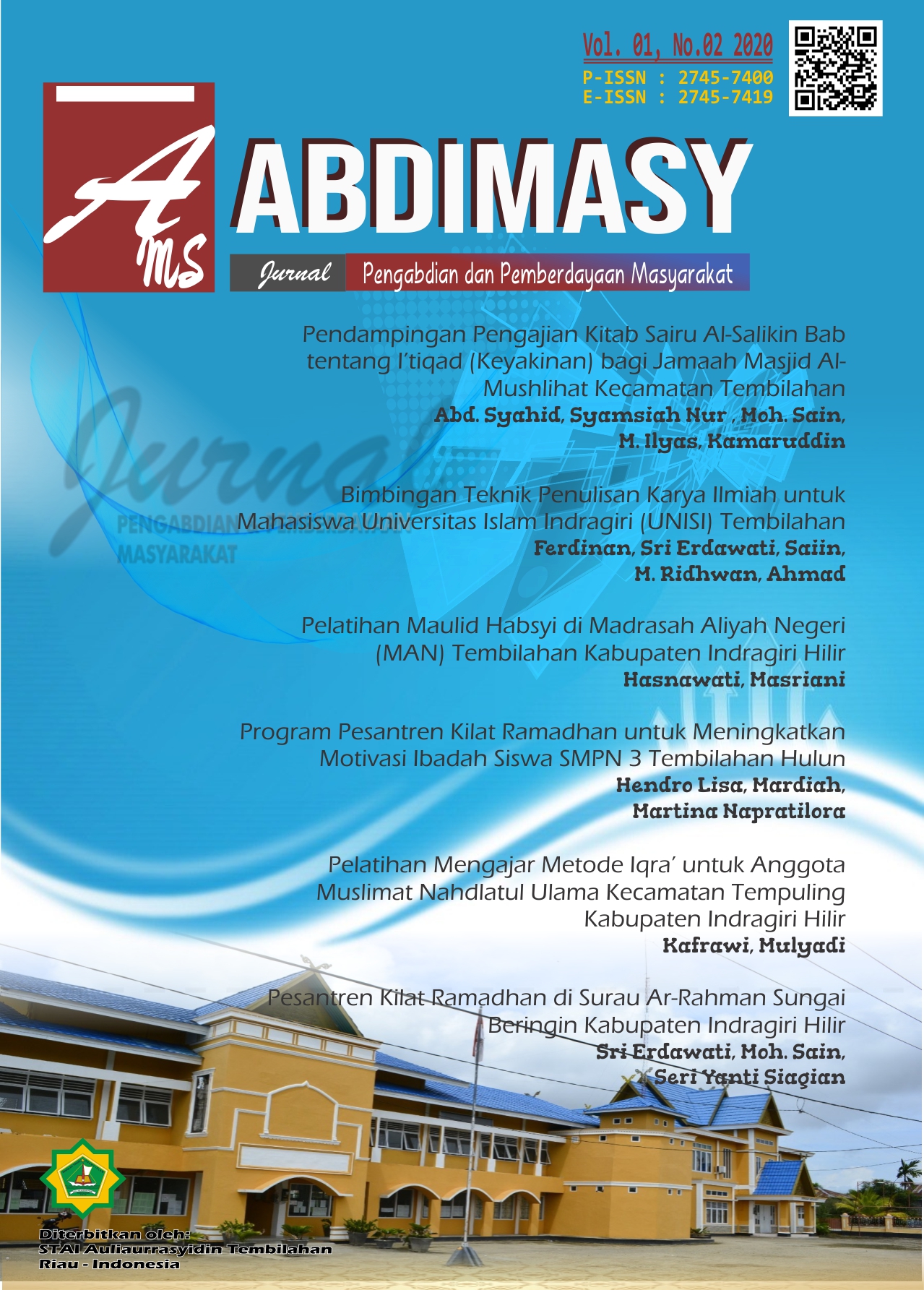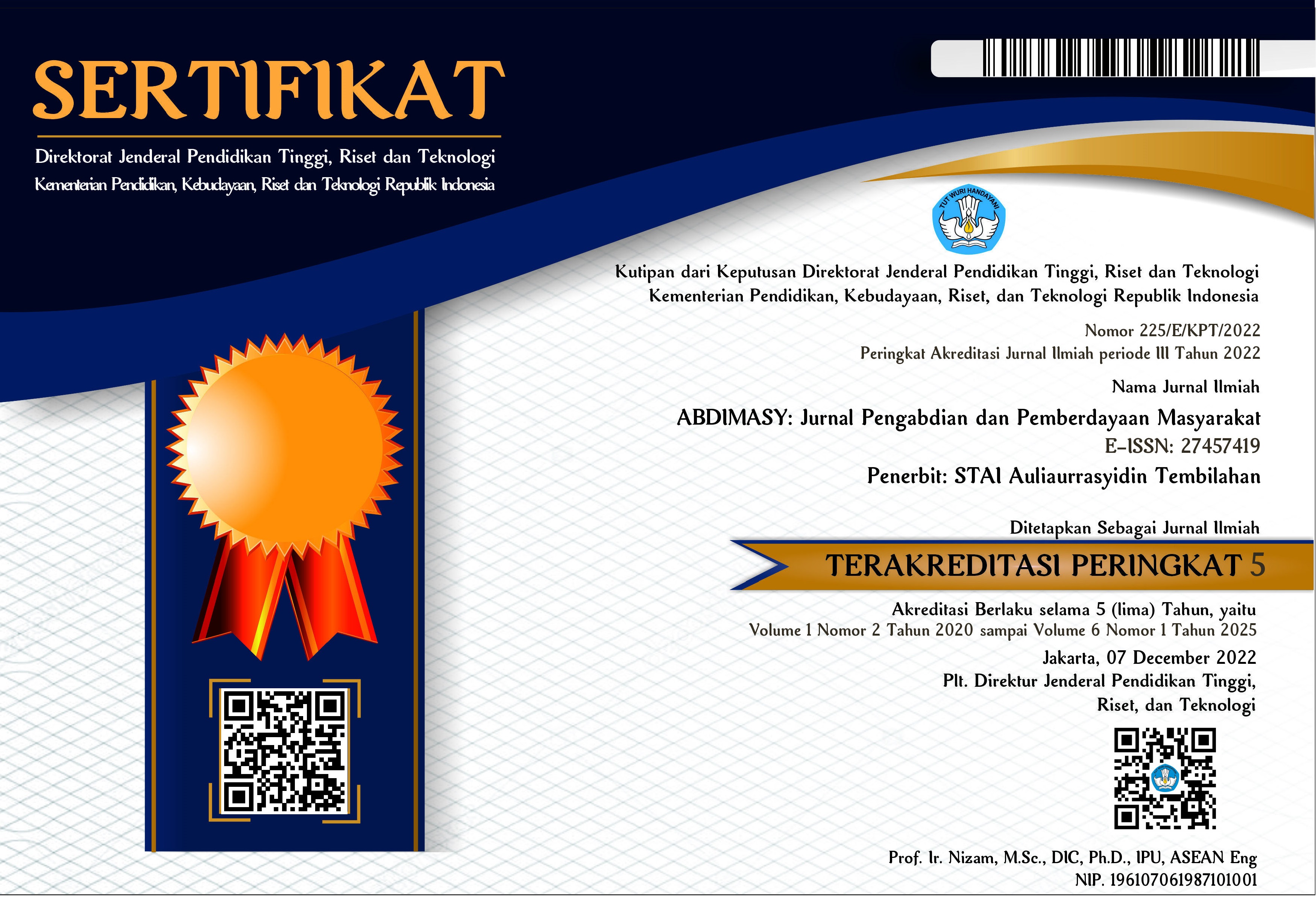Bimbingan Teknik Penulisan Karya Ilmiah untuk Mahasiswa Universitas Islam Indragiri (UNISI) Tembilahan
DOI:
https://doi.org/10.46963/ams.v1i2.256Keywords:
Scientific Writing, Papers, SupervisionAbstract
This study discussed the Technical Supervision for Writing Scientific Papers held at the Islamic University of Indragiri (UNISI) Tembilahan. This activity was important because it can educate, train, and supervise students to write based on scientific writing procedures. The purpose of this activity was to provide practical supervision for students, they can apply these supervision techniques when writing papers, research proposals, research reports, writing resumes, and book reviews, especially writing a final project that must be accomplished before graduation. This activity was very welcomed enthusiastically by students because they became more aware of the definition of scientific writing, its objectives, its benefits, its characteristics, and knowing techniques and steps about scientific writing.
Downloads
References
Dalman. (2013). Menulis Karya Ilmiah. Jakarta: Raja Grafindo Persada.
Dwiloka., Bambang., & Rati, R. (2001). Teknik Menulis Karya Ilmiah. Jakarta: Rineka Cipta.
Ermanto, dkk. (2015). Bahasa Indonesia Pengembangan Kepribadian di Perguruan. Padang: Padang UNP Press.
Faizah., & Hasnah. (2009). Menulis Karangan Ilmiah. Pekanbaru: Cendikia Insani Pekanbaru.
Wardani, dkk. (2007). Teknik Menulis Karya Ilmiah. Jakarta: Universitas Terbuka.
Downloads
Published
Issue
Section
License
Authors who publish with this journal agree to the following terms:
1. Copyright on any article is retained by the author(s).
2. The author grants the journal, right of first publication with the work simultaneously licensed under a Creative Commons Attribution shareAlike 4.0 International License that allows others to share the work with an acknowledgment of the work’s authorship and initial publication in this journal.
3. Authors are able to enter into separate, additional contractual arrangements for the non-exclusive distribution of the journal’s published version of the work (e.g., post it to an institutional repository or publish it in a book), with an acknowledgment of its initial publication in this journal.
4. Authors are permitted and encouraged to post their work online (e.g., in institutional repositories or on their website) prior to and during the submission process, as it can lead to productive exchanges, as well as earlier and greater citation of published work.
5. The article and any associated published material is distributed under the Creative Commons Attribution-ShareAlike 4.0 International License





2.png)



